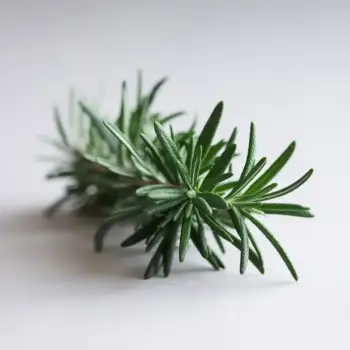Rosemary and Oregano are aromatic herbs used in cooking for their distinct flavors. Rosemary has a woodsy, citrus-like aroma, ideal for meats and roasted vegetables. Oregano has a bold, warm taste, great for pizza, pasta sauces, and Mediterranean dishes. Use them to enhance a wide variety of recipes.

Rosemary is an evergreen herb with needle-like leaves. It's native to the Mediterranean and has a strong, earthy aroma with hints of lemon-pine. Rosemary is often used in roasts, stews, and breads.

Oregano is a perennial herb with small, oval leaves. It's a staple in Greek and Italian cuisines and is known for its bold, warm, and slightly bitter taste, often associated with pizza and pasta sauces.
Rosemary and Oregano differ in flavor, texture, and culinary uses. Rosemary has a woodsy, citrus-like fragrance, while Oregano offers a more earthy, peppery note. Their textures also vary, with Rosemary having tougher, needle-like leaves and Oregano having softer, more delicate leaves. Additionally, Rosemary is often used in longer cooking processes, while Oregano is versatile in both fresh and dried forms.

Your ultimate Recipe Box, Meal Planner, and Cooking Class all in one
Rosemary is ideal for robust meat dishes like lamb roasts, beef stews, and grilled chicken. It infuses the meat with a deep, aromatic flavor and can withstand long cooking times. Use whole sprigs to infuse flavor and remove them before serving. Oregano complements meat dishes such as meatballs, Bolognese sauce, and Greek gyros. It imparts a warm, slightly bitter taste that enhances the savoriness of meats. Sprinkle oregano liberally in dishes, as it melds well with other spices.
Rosemary pairs well with roasted vegetables like potatoes, carrots, and onions. Its robust flavor holds up well to the high heat of roasting. Toss vegetables with chopped rosemary and olive oil before roasting for a fragrant side dish. Oregano is excellent in Mediterranean vegetable dishes like ratatouille, Greek salads, and grilled vegetables. Its pungent taste complements the natural sweetness of many vegetables. Add oregano during the last few minutes of cooking to preserve its flavor.
Rosemary's distinctive flavor is a delightful addition to breads, focaccias, and biscuits. Finely chop fresh rosemary leaves and mix them into the dough for a fragrant twist on classic baked goods. Oregano can be mixed into dough for pizza crusts or sprinkled atop savory pastries for a hint of herbal warmth. Its flavor complements cheese and tomato-based toppings especially well.
Both Rosemary and Oregano contain antioxidants and have potential health benefits.
| Nutrient | Oregano ( per tablespoon (fresh) ) | Rosemary ( per tablespoon (fresh) ) |
|---|---|---|
| Fat | 0.1g | 0.1g |
| Protein | 0.1g | 0.1g |
| Calories | 3 | 2 |
| Carbohydrates | 0.7g | 0.6g |
| Dietary Fiber | 0.5g | 0.4g |
Yes, Rosemary and Oregano can be used together, but their strong flavors may compete, so use them sparingly and balance their proportions according to your taste.
Both can complement poultry, with Rosemary being a classic choice for roasted chicken and Oregano suiting more Mediterranean-style dishes like Greek lemon chicken.
Typically, use one-third the amount of dried herbs to replace fresh, as dried herbs have a more concentrated flavor.
Rosemary should generally be added early in cooking, especially for dishes with longer cooking times, to allow its flavor to permeate the dish.
Dried Oregano withstands long cooking times well, but fresh Oregano is best added towards the end of cooking to preserve its flavor.